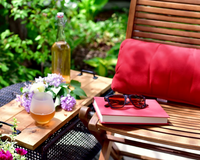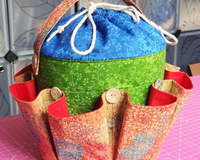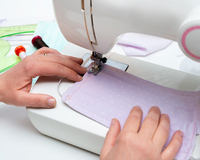If you would like to see our range of interfacing & waddings you can find them all HERE
Not sure what wadding to use with your sewing project.
In this video which was recorded live Heather discusses the different types of wadding and interfacing and gives advice about using them in a variety of projects
Click the image above or click HERE to watch
Demystifying Wadding and Interfacing: A Comprehensive Guide for Sewing Enthusiasts
Introduction:
When it comes to sewing, selecting the right materials is crucial for achieving professional and polished results. Among the essential components are wadding and interfacing. While these terms might sound unfamiliar to beginners, they play vital roles in various sewing projects. In this blog post, we'll delve into the world of wadding and interfacing, exploring their different types and discussing their applications. By the end, you'll have a better understanding of these indispensable elements and be ready to incorporate them into your sewing endeavours.
1. Wadding:
Wadding, also known as batting, refers to a thick layer of material inserted between fabric layers to provide insulation, structure, or a plush feel. Let's explore the different types of wadding commonly used in sewing projects:
a. Polyester Wadding: This is a popular choice due to its affordability, availability, and ease of use. It provides medium loft and works well for general quilting, garments, and soft crafts.
b. Cotton Wadding: Often chosen for its natural fibre composition, cotton wadding offers a breathable option. It is suitable for lightweight garments, baby items, and quilts. Cotton wadding can also be preferred for its eco-friendly characteristics.
c. Wool Wadding: With its excellent insulation properties, wool wadding is perfect for projects that require warmth, such as winter clothing, blankets, and outerwear. It provides a lofty, luxurious feel but may be more expensive compared to other types.
d. Bamboo Wadding: Known for its eco-friendly and sustainable nature, bamboo wadding offers a soft and silky texture. It is often used for baby items, bedding, and lightweight garments.
2. Interfacing:
Interfacing is a fabric-like material applied to the wrong side of the main fabric to provide stability, structure, or reinforcement to specific areas. It comes in various types, each designed for different purposes. Here are the most common interfacing options:
a. Fusible Interfacing: This type of interfacing has a heat-activated adhesive on one side, allowing it to be ironed onto fabric. Fusible interfacing is versatile, easy to use, and comes in different weights to suit various projects.
b. Sew-In Interfacing: As the name suggests, sew-in interfacing is attached to the fabric by stitching. It offers a softer and more flexible result compared to fusible interfacing. Sew-in interfacing is ideal for lightweight fabrics, delicate projects, or when a temporary application is desired.
c. Knit Interfacing: Primarily used for stretchy fabrics, knit interfacing provides stability without compromising the fabric's elasticity. It is commonly used in garment construction, especially for necklines, cuffs, and waistbands.
d. Woven Interfacing: This type of interfacing is made from tightly woven fabric and is suitable for medium to heavyweight fabrics. Woven interfacing offers substantial support and structure, making it ideal for tailored garments, bags, and accessories.
Conclusion:
Understanding the different types of wadding and interfacing is essential for achieving professional sewing results. Whether you are quilting, making garments, or working on crafts, choosing the appropriate wadding and interfacing can enhance the durability, structure, and overall appearance of your projects. Experiment with different materials and weights to find what works best for your specific needs. With this newfound knowledge, you're well-equipped to elevate your sewing skills and embark on exciting new creations. Happy sewing!




